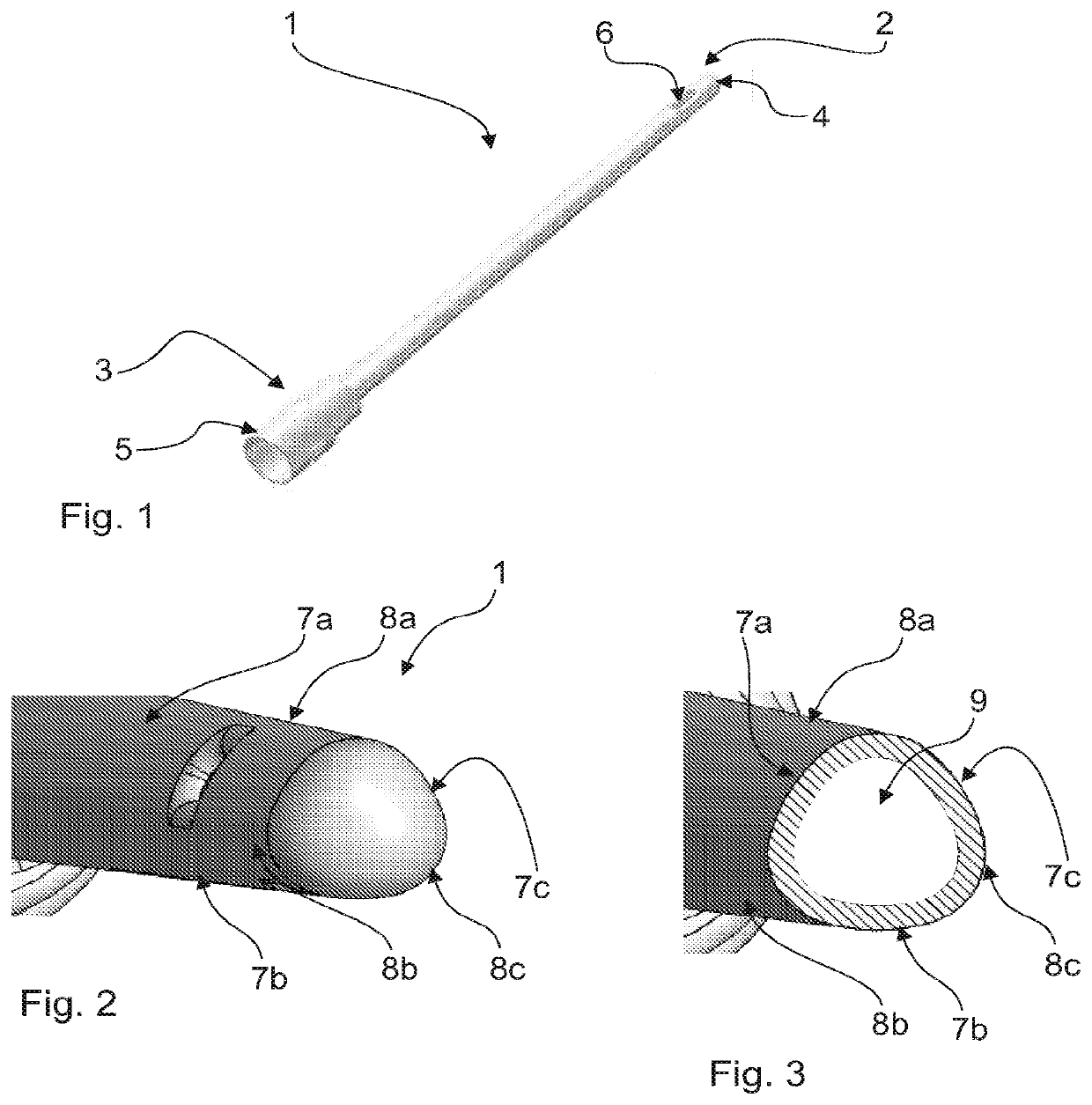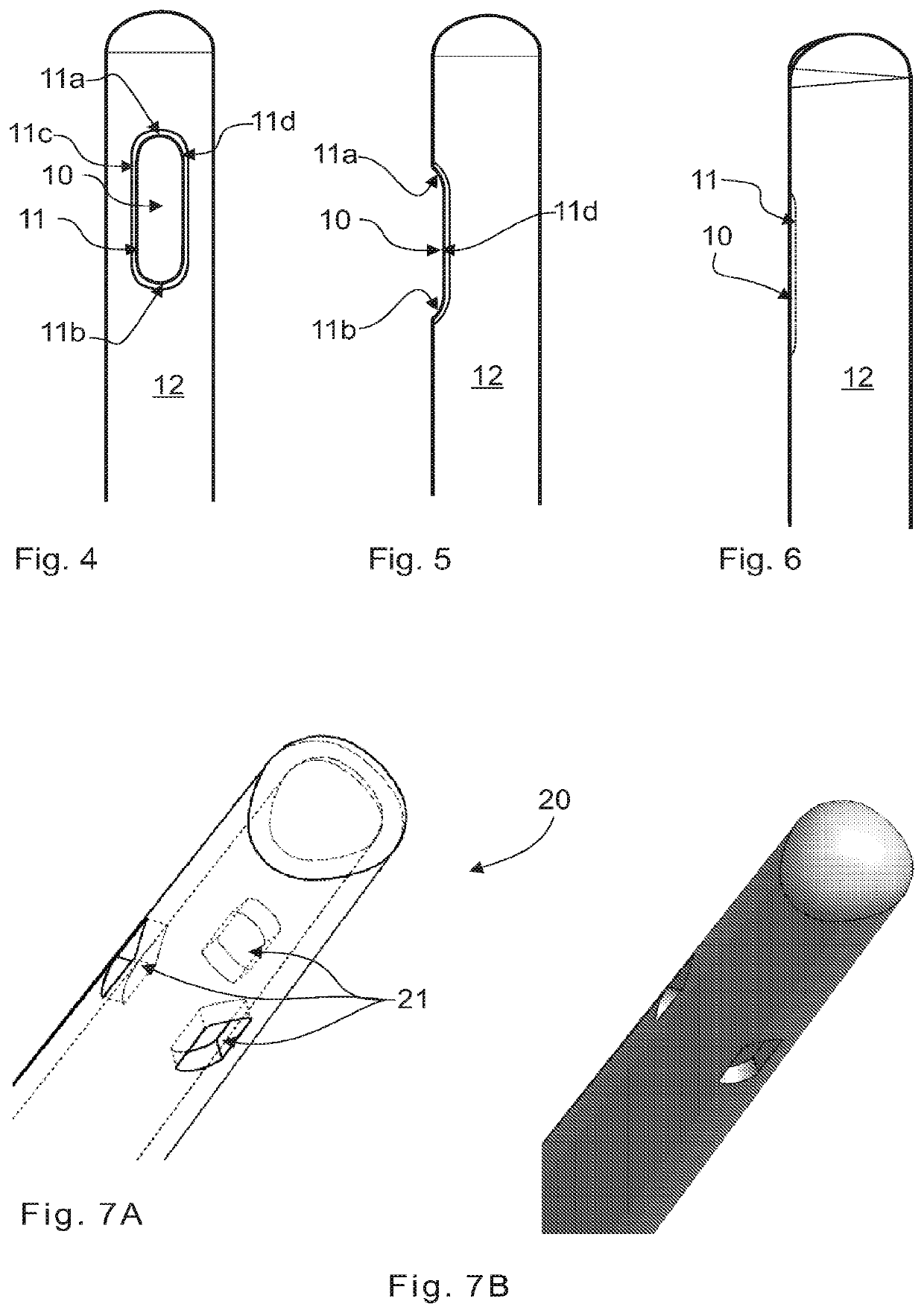Intermittent urinary catheter with conical lumen
a catheter and bladder technology, applied in catheters, other medical devices, coatings, etc., can solve the problems of affecting the flow rate, unable to provide any pressure to the bladder, and limited catheter diameter,
- Summary
- Abstract
- Description
- Claims
- Application Information
AI Technical Summary
Benefits of technology
Problems solved by technology
Method used
Image
Examples
examples
[0065]Tests were done on intermittent female catheters. As mentioned in the Background supra, females that are not catheter users are able to empty their bladder with a volumetric flow rate of 24 ml / s in average. A known catheter CH12 has a volumetric flow rate of about 9 ml / s in average (8.9 ml / s). This means that in average a catheter user takes up to three times as long time as a non-catheter user to empty their bladder. Different geometries of female catheters were tested to show which geometries influence the flow rates and by how much.
[0066]The catheters were tested according to standard DS / EN 1618:1997. The testing was for all types of catheters done at a water column pressure of 400 mm H2O. The time it takes to empty 200 ml was measured.
[0067]The test set-up is shown in FIG. 10.
[0068]For all tests 5 measurements were done on each catheter, as described in the process for testing below:[0069]1. Insert a rubber stopper with a centre hole corresponding largely to the circumfere...
PUM
 Login to View More
Login to View More Abstract
Description
Claims
Application Information
 Login to View More
Login to View More - R&D
- Intellectual Property
- Life Sciences
- Materials
- Tech Scout
- Unparalleled Data Quality
- Higher Quality Content
- 60% Fewer Hallucinations
Browse by: Latest US Patents, China's latest patents, Technical Efficacy Thesaurus, Application Domain, Technology Topic, Popular Technical Reports.
© 2025 PatSnap. All rights reserved.Legal|Privacy policy|Modern Slavery Act Transparency Statement|Sitemap|About US| Contact US: help@patsnap.com



